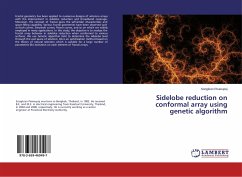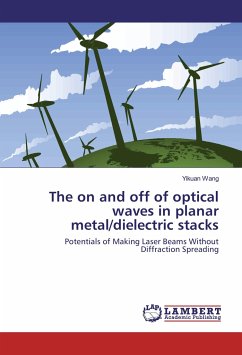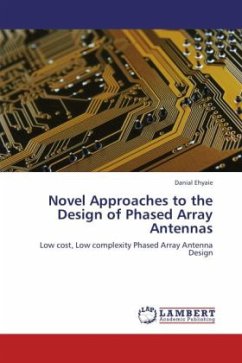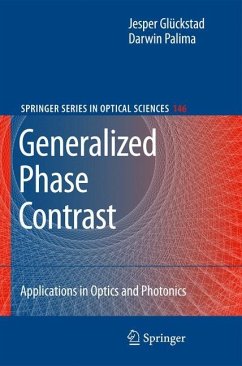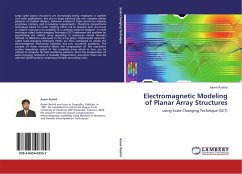
Electromagnetic Modeling of Planar Array Structures
using Scale Changing Technique (SCT)
Versandkostenfrei!
Versandfertig in 6-10 Tagen
38,99 €
inkl. MwSt.

PAYBACK Punkte
19 °P sammeln!
Large sized planar structures are increasingly being employed in satellite and radar applications. But due to large electrical size and complex cellular patterns of modern designs, full-wave analysis of these structures requires enormous memory and processing requirements. Therefore conventional techniques based on linear meshing either fail to simulate such structures or require resources not available to a common antenna designer. A novel technique called Scale-changing Technique (SCT) addresses this problem by partitioning the cellular array geometry in numerous nested domains defined at di...
Large sized planar structures are increasingly being employed in satellite and radar applications. But due to large electrical size and complex cellular patterns of modern designs, full-wave analysis of these structures requires enormous memory and processing requirements. Therefore conventional techniques based on linear meshing either fail to simulate such structures or require resources not available to a common antenna designer. A novel technique called Scale-changing Technique (SCT) addresses this problem by partitioning the cellular array geometry in numerous nested domains defined at different scale-levels in the array plane. Multi-modal networks, called Scale-changing Networks (SCN), are then computed to model the electromagnetic interaction between any two successive partitions. The cascade of these networks allows the computation of the equivalent surface impedance matrix of the complete array which in turn can be utilized to compute far-field scattering patterns. Sincethe computation of scale-changing networks is mutually independent, execution times can be reduced significantly by employing multiple processing units.



